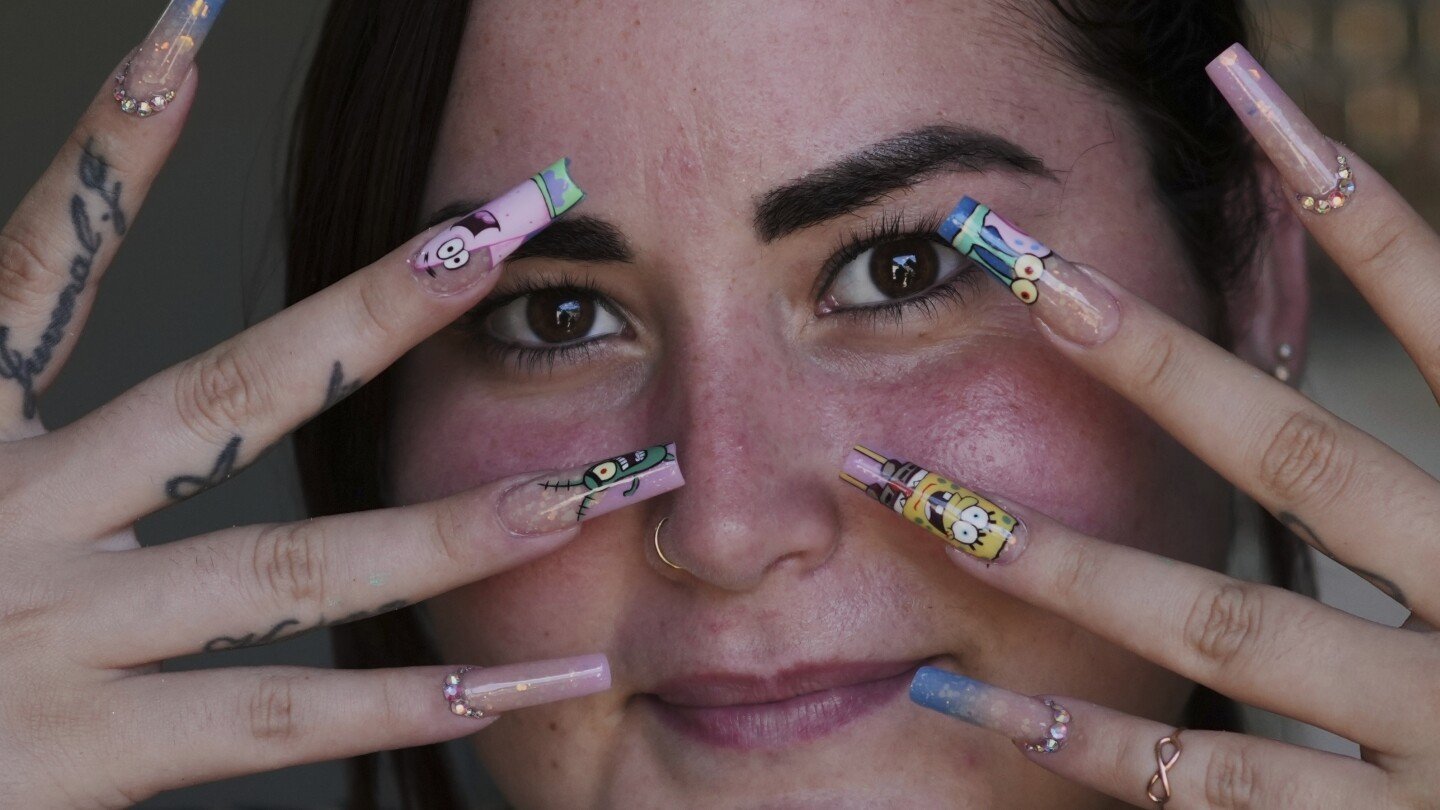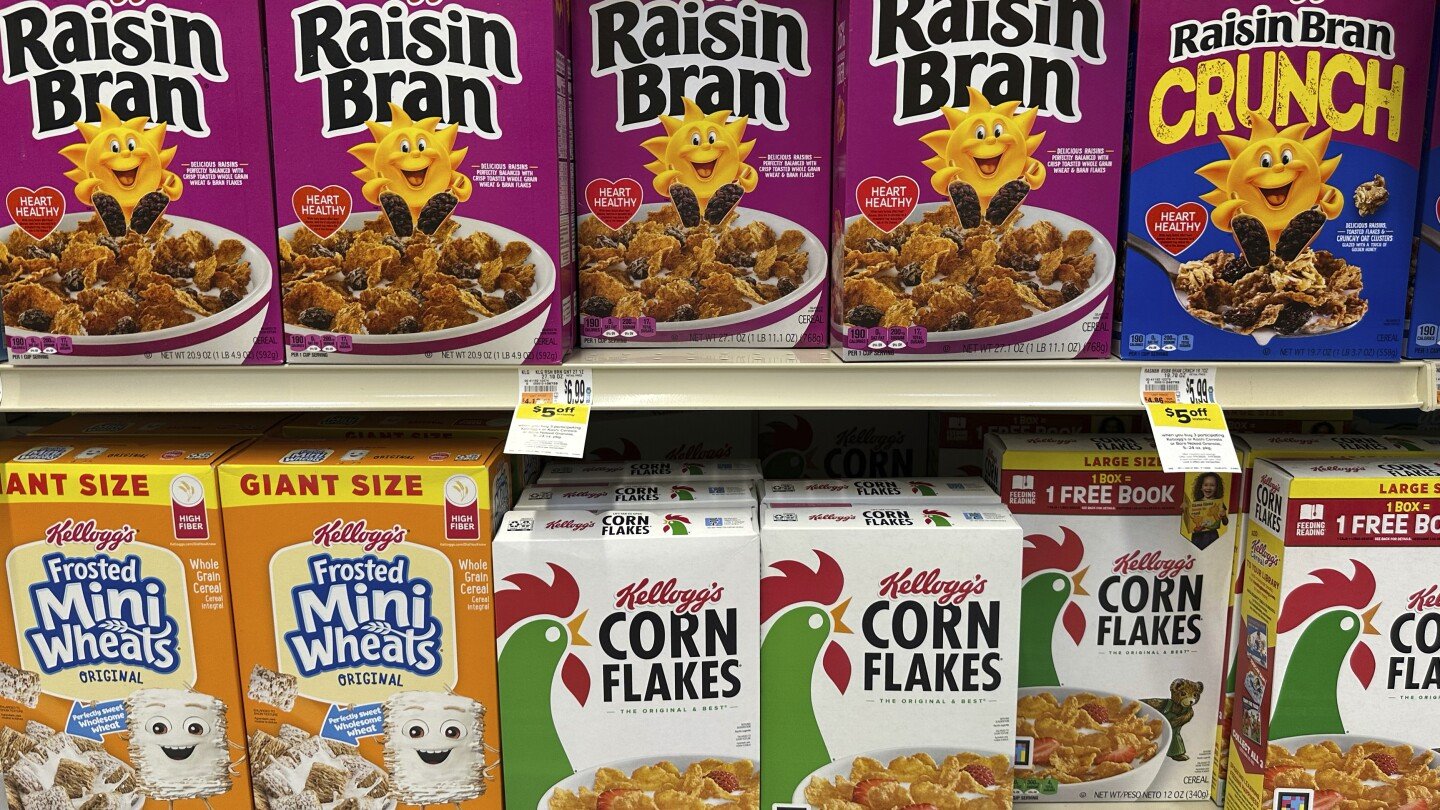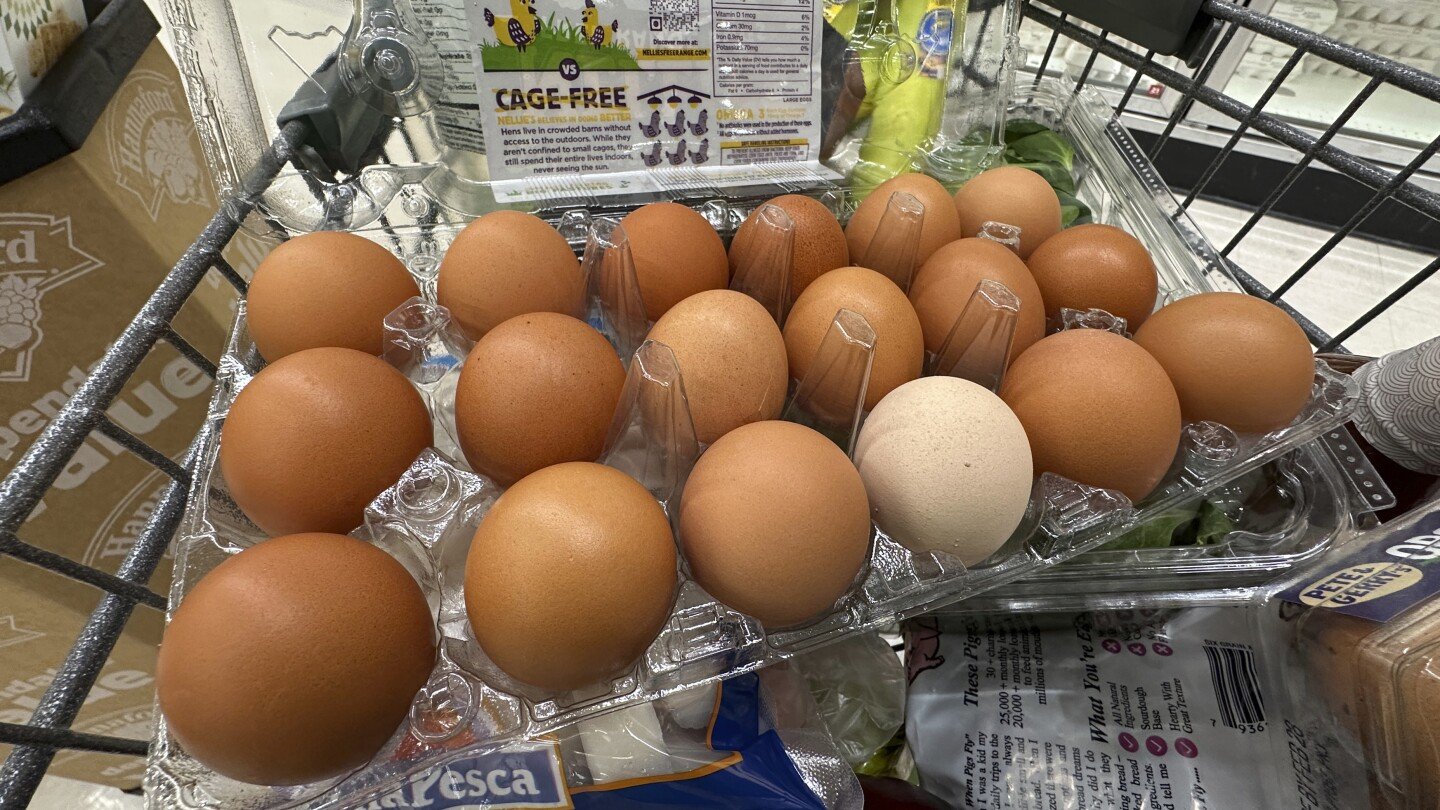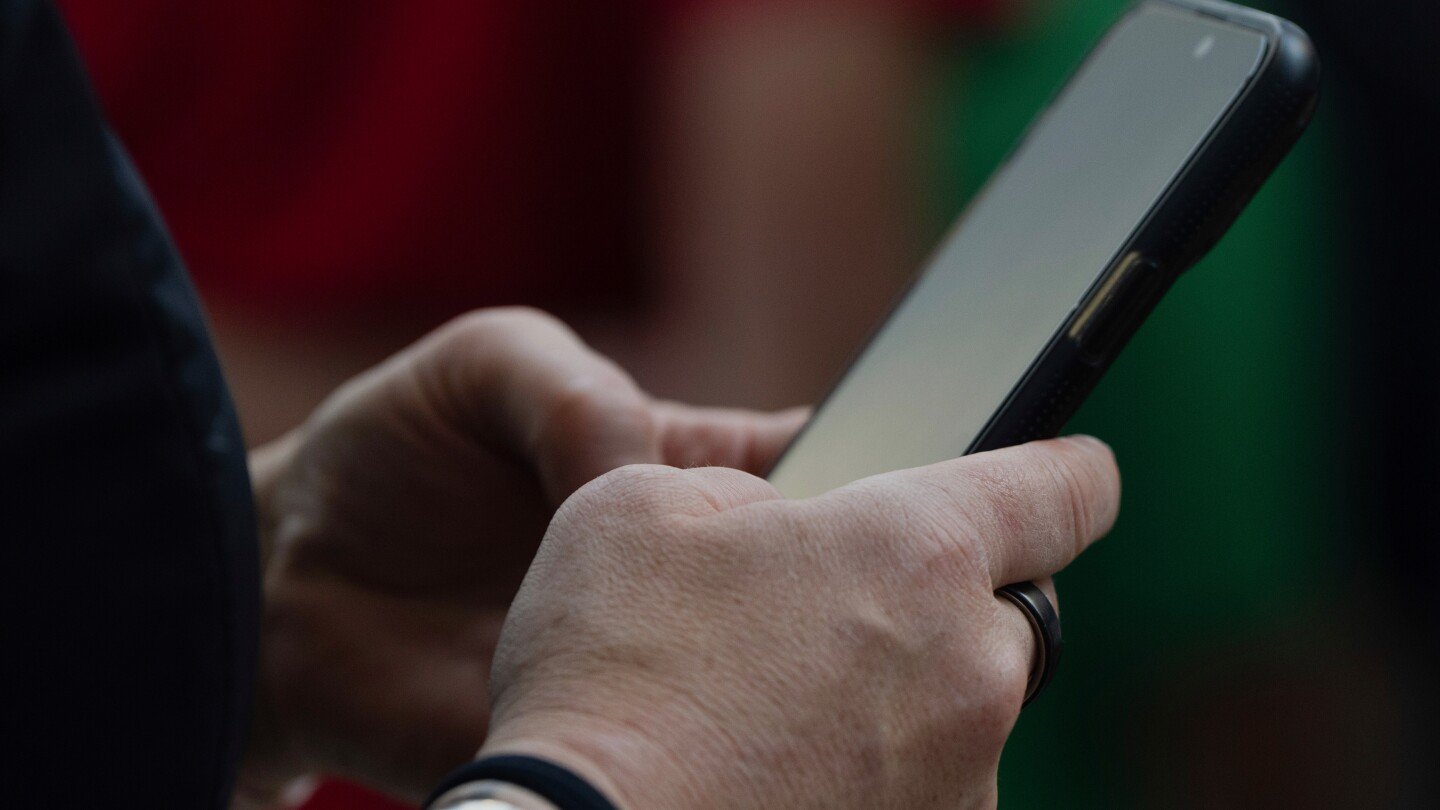Lifestyle
Cuban women spend on extravagant nail art

HAVANA (AP) — Cuban women are embracing extravagant nail art with many willing to spend the money to have extremely long and intricate nails despite the economic obstacles.
While over-the-top nail designs have long been common elsewhere, in Cuba they stand out because most Cubans have little disposable income and procuring the embellishments isn’t easy.
A deepening economic crisis makes almost every aspect of life in Cuba challenging for the population; long lines for buses, power outages and shortages are part of everyday life on the island.
For those who have mastered the work, whether from online video tutorials or visiting manicurists from other countries, extravagant nails have become an important source of income in Cuba’s limited private economy.
Recently, Cuban manicurist Marisel Darias Valdés spent nearly six hours applying and decorating the acrylic extensions for a client.
She set up a nail salon at her home in Havana, where she displays the specialized, imported products that are expensive and very difficult to obtain in the city.
The nails that Darias decorated for her client, Mariam Camila Sosa, were at least an inch (2.5 centimeters) long. Sosa chose the cartoon character Sponge Bob because it is her daughter’s favorite. The designs of the paintings and nail decorations are varied and all handmade.
With this level of detail, Darias said she could not handle more than two clients per day.
“Before it was a half-hour service,” she said. “They were table manicures, natural paint and that’s it; now it’s all become art, it’s not just fix them and you’re done.”
“Cuban women are very vain. They may lack food, but their nails, hair, eyelashes, and feet always have to be well-groomed,” Darias said.
There is no official figure on the number of these specialized businesses, but since the pandemic, the small private spaces have flourished, and some have turned it into an art form.
Manicurists have also learned to become content creators with sophisticated social media accounts to promote and sell their services, taking advantage of Cuba’s not-always-reliable connection to the internet.
Manicurist Dayana Roche showcases some of her numerous social media postings.
“It is the fundamental tool to attract the public, the clients. And you have to create a lot of content (on social media) networks because that’s where everyone sees your work,” said Roche.
It’s a way of earning a living. Some are university graduates, but this job offers a good alternative to low wages in a tough economic scenario.
Each client agrees with their manicurist on the cost of the service, which can range from $10 to $40. That’s a lot of money in a country where a monthly state salary is around 5,000 Cuban pesos (about $13), although many families rely on remittances from relatives abroad and state subsidies.
The materials are brought into Cuba from the United States or Panama by the manicurists themselves or relatives, or they are bought from resellers in Cuba. A small bottle of professional nail polish alone can cost $15.
Miralys Maura Cruz and her sister go about their daily domestic chores with surprising agility despite their crystal-adorned 2-inch nails.
“Without my nails, I’m nobody, I know they are not cheap, and nails are a luxury, it’s my luxury,” said Cruz.
Lifestyle
Americans buying less cereal may be a factor in sale of Kellogg’s brands

Breakfast cereal could use a lucky charm.
U.S. sales of the colorfully packaged morning staple have been in a decades-long decline, a trend back in the spotlight with news that Italian confectioner Ferrero Group plans to purchase WK Kellogg, maker of Corn Flakes, Froot Loops, Rice Krispies and other familiar brands.
Except for a brief period during the coronavirus pandemic, when many workers were home and had time to sit down with a bowl of cereal and milk, sales of cold cereal have steadily fallen for at least 25 years, experts say.
In the 52 weeks ending July 3, 2021, Americans bought nearly 2.5 billion boxes of cereal, according to market research company Nielsen IQ. In the same period this year, the number was down more than 13% to 2.1 billion.
Cereal has been struggling for multiple reasons. The rise of more portable options like Nutri-Grain bars and Clif Bars – which both went on sale in the early 1990s – made it easier for consumers to grab breakfast on the go.
Concerns about food processing and sugar intake have also dimmed some consumers’ enthusiasm for cereals. One cup of Lucky Charms contains 24% of a consumer’s daily recommended intake of sugar, for example.
“Cereal finds it really hard to get out from underneath that,” said Tom Rees, global insight manager for staple foods at the consulting company Euromonitor. “It can’t escape the fact that it doesn’t look like a natural food. You have to create it and form it.”
Rees noted that for decades, cereal manufacturers focused on adding vitamins and minerals to build cereal’s health credentials. But consumers now are looking for simplified ingredient lists.
Artificial dyes — like the petroleum-based colors that brighten Froot Loops — have also come under fire. Last fall, dozens of people rallied outside WK Kellogg’s Battle Creek, Michigan, headquarters demanding that it remove artificial dyes from its cereals. Kellogg and General Mills — another major U.S. cereal maker — have since pledged to phase out artificial dyes.
Add to that, consumers are expanding their idea of what breakfast can be. Yogurt and shakes have replaced the traditional bacon and eggs. Kenton Barello, a vice president at the market research firm YouGov, said his polling shows that Generation Z consumers, who were born between 1997 and 2007, eat more vegetables for breakfast than other generations.
Barello said YouGov’s polling also shows that members of Gen Z are less likely to eat breakfast but still buy ready-to-eat cereal, suggesting they’re eating it as a snack or for other meals.
“With younger generations, there are differences in their relationship with food and these eating moments,” Barello said. “They are going about breakfast in a different way than Millennials, Gen X and Baby Boomers.”
Cereal’s struggles are part of what led to the breakup of the Kellogg Company. In 2023, the century-old company that put Battle Creek, Michigan, on the map split into two companies. Kellanova took popular snack brands like Cheez-Its, Pringles and Pop-Tarts as well as international cereals, and WK Kellogg made cereals for the U.S., Canada and the Caribbean.
In 2024, M&M’s maker Mars Inc. announced a plan to buy Kellanova for more than $30 billion. That plan has cleared U.S. regulators but is still awaiting regulatory approval in Europe. WK Kellogg was left to try to rejuvenate the cereal business.
The sale of WK Kellogg to Ferrero doesn’t mean supermarket cereal aisles are at risk of extinction. Packaged food companies have options for turning around their soggy cereal sales, Rees said. He thinks Kellogg’s Mashups line, which mixed brands like Frosted Flakes and Froot Loops into one box, appeal to younger consumers, who tend to like interesting flavor combinations.
The market may also have a fragmented future, according to Rees. Companies may have to accept that younger buyers want a sweet-and-spicy cereal while older buyers might want a Keto-friendly option.
“The future might be realizing that the era of ‘This brand will serve everybody’ isn’t going to happen,” Rees said.
Julia Mills, a food analyst with the consulting company Mintel, thinks the shrinking population of children in the U.S. gives cereal makers the opportunity to shift to more sophisticated flavors and packaging. Cereal could be positioned as a fancy topping for yogurt, for example, or a fiber-rich food that can improve gut health.
Some niche cereal brands, like high-fiber Poop Like a Champion cereal and high-protein, zero-sugar Magic Spoon, are already doing that. But legacy brands say they shouldn’t be counted out.
Jeffrey Harmening, the chairman and chief executive officer of Cheerios maker General Mills, said his company considered trying to acquire Magic Spoon. Instead, it made high-protein versions of Cheerios, which now outsells Magic Spoon.
“The key to longer term is, honestly, is giving consumers more of what they want,” Harmening said during a conference call with investors in March.
Lifestyle
Trump administration sues California over egg prices and blames animal welfare laws

The Trump administration is suing the state of California to block animal welfare laws that it says unconstitutionally helped send egg prices soaring. But a group that spearheaded the requirements pushed back, blaming bird flu for the hit to consumers’ pocketbooks.
The lawsuit, filed in federal court in California on Wednesday, challenges voter initiatives that passed in 2018 and 2008. They require that all eggs sold in California come from cage-free hens.
The Trump administration says the law imposes burdensome red tape on the production of eggs and egg products across the country because of the state’s outsize role in the national economy.
“It is one thing if California passes laws that affects its own State, it is another when those laws affect other States in violation of the U.S. Constitution,” U.S. Agriculture Brooke Rollins said in a statement Thursday. “Thankfully, President Trump is standing up against this overreach.”
Egg prices soared last year and earlier this year due in large part to bird flu, which has forced producers to destroy nearly 175 million birds since early 2022. But prices have come down sharply recently. While the Trump administration claims credit for that, seasonal factors are also important. Avian influenza, which is spread by wild birds, tends to spike during the spring and fall migrations and drop in summer.
“Pointing fingers won’t change the fact that it is the President’s economic policies that have been destructive,” the California Department of Justice said in a statement Friday. “We’ll see him in court.”
The average national price for a dozen Grade A eggs declined to $5.12 in April and $4.55 in May after reaching a record $6.23 in March, according to the U.S. Bureau of Labor Statistics. But the May price was still 68.5% higher than a year earlier.
“Trump’s back to his favorite hobby: blaming California for literally everything,” Gov. Gavin Newsom’s office said in a social media post.
The federal complaint alleges that California contributed to the rise in egg prices with regulations that forced farmers across the country to adopt more expensive production practices. The lawsuit also asserts that it is the federal government’s legal prerogative to regulate egg production. So it seeks to permanently block enforcement of the California regulations that flowed from the two ballot measures.
“Americans across the country have suffered the consequences of liberal policies causing massive inflation for everyday items like eggs,” Attorney General Pam Bondi said in a statement. “Under President Trump’s leadership, we will use the full extent of federal law to ensure that American families are free from oppressive regulatory burdens and restore American prosperity.”
While 2018’s Proposition 12 also banned the sale of pork and veal in California from animals raised in cages that don’t meet minimum size requirements, the lawsuit only focuses on the state’s egg rules.
Humane World for Animals, which was named the Humane Society of the United States when it spearheaded the passage of Proposition 12, says avian influenza and other factors drove up egg prices, not animal welfare laws. And it says much of the U.S. egg industry went cage-free anyway because of demand from consumers who don’t want eggs from hens confined to tiny spaces.
“California has prohibited the sale of cruelly produced eggs for more than a decade — law that has been upheld by courts at every level, including the Supreme Court. Blaming 2025 egg prices on these established animal welfare standards shows that this case is about pure politics, not constitutional law,” Sara Amundson, president of the Humane World Action Fund, said in a statement.
The American Egg Board, which represents the industry, said Friday that it will monitor the progress of the lawsuit while continuing to comply with California’s laws, and that it appreciates Rollins’ efforts to support farmers in their fight against bird flu and to stabilize the egg supply.
“Egg farmers have been both responsive and responsible in meeting changing demand for cage-free eggs, while supporting all types of egg production, and continuing to provide options in the egg case for consumers,” the board said in a statement.
Lifestyle
One Tech Tip: All the ways to unsubscribe, after ‘click-to-cancel’ was blocked

NEW YORK (AP) — A “click-to-cancel” rule, which would have made it easier for consumers to end unwanted subscriptions, has been blocked by a federal appeals court days before it was set to go into effect. But there are ways to end those subscriptions and memberships, even if they take some work.
The rule would also have required companies to disclose when free trials and promotional offers would end and let customers cancel recurring subscriptions as easily as they started them. But even without the new federal guidance, here are some ways to stay on top of subscription and membership fees.
Use calendar reminders and regularly review your bills
Experts at the Consumer Federation of America recommend setting calendar reminders for whenever a free trial period ends, to alert yourself to cancel promotional offers before the real recurring costs kick in. The auto-enrollment process, in which the company does not remind the consumer via email that a trial is about to end and higher monthly payments will begin, was also at the heart of the FTC’s rule.
“No subscription business model should be structured to profit from a gauntlet-style cancellation process,” said Erin Witte, Director of Consumer Protection for the Consumer Federation of America, in a statement on the click-to-cancel rule.
Regularly reviewing your credit card and debit card bills can also help you keep track of any recurring charges — including price increases you may have missed or that you didn’t anticipate when trying out a new membership or subscription.
Know the terms and conditions of a given subscription
“Companies make it easy for consumers to click to sign up and easy for the companies to automatically withdraw funds from consumers’ accounts,” said Shennan Kavanagh, Director of Litigation at the National Consumer Law Center (NCLC) in a statement on the FTC’s click-to-cancel rule. “People should not (have to) spend months trying to cancel unwanted subscriptions.”
Given the FTC’s vacated rule, though, companies may still legally require that customers cancel memberships or subscriptions by phone, even as they permit signing up, enrolling, and paying bills online. Consumer advocates say this places an extra burden of time and energy on the consumer to stop an unwanted recurring fee, but sometimes knowing the terms of the subscription and getting on the phone is worth the trouble.
There are some services that unenroll you
Apps like Rocket Money and services like Trim, which is accessed through a browser, can keep track of your recurring monthly fees and subscriptions, for free — or for a fee — and can help you catch new ones or even unsubscribe from some services.
For parents, especially, a service like Trim could help inform them that a child has started a new subscription, game or membership before the fees recur. And Rocket Money will actively work to end unwanted subscriptions for you, for a monthly price. If the company can’t successfully end or cancel the subscription or membership, it will give the customer the information needed to do so. Trim also provides this service, in its premium form, for an additional fee.
Resist deals when canceling
The FTC is currently moving forward with preparations for a trial involving Amazon’s Prime program, which accuses the retailer of enrolling consumers in its Prime program without their consent and making it difficult to cancel subscriptions.
Often, when a consumer tries to cancel a subscription for something like Prime, which offers free delivery and streaming video, the company will offer a month or more of the subscription at a promotional rate — half off, or at other, better-seeming values, to entice a customer to stay. Staying strong in the face of what may appear to be a good deal can help you stop recurring monthly fees before you forget to cancel them again.
Agreeing to yet another trial or promotional rate, which is another on-ramp to auto-enrollment, just continues the cycle, according to consumer advocates.
What would the FTC’s rule have done?
The FTC’s rule would have required businesses to obtain a customer’s consent before charging for memberships, auto-renewals and programs linked to free trials. The businesses would have also had to disclose when free trials and promotional offers would end.
The U.S. Court of Appeals for the Eighth Circuit said this week that the FTC made a procedural error by failing to come up with a preliminary regulatory analysis, which is required for rules whose annual impact on the U.S. economy is more than $100 million.
The FTC said that it did not have to come up with a preliminary regulatory analysis because it initially determined that the rule’s impact on the national economy would be less than $100 million. An administrative law judge decided that the economic impact would be more than the $100 million threshold, and the court decided to vacate the rule.
Former President Joe Biden’s administration had included the FTC’s proposal as part of its “Time is Money” initiative, which aimed to crack down on consumer-related hassles.
——
“The Associated Press receives support from Charles Schwab Foundation for educational and explanatory reporting to improve financial literacy. The independent foundation is separate from Charles Schwab and Co. Inc. The AP is solely responsible for its journalism.”
-

 Asia5 days ago
Asia5 days agoIndonesia’s Mount Lewotobi Laki Laki erupts sending ash 11 miles into sky
-

 Africa4 days ago
Africa4 days agoCairo telecom fire injures 14, disrupts internet nationwide
-

 Europe4 days ago
Europe4 days agoHe was born to a US citizen soldier on an army base in Germany. Now he’s been deported to Jamaica, a country he’d never been to
-

 Asia3 days ago
Asia3 days agoA torpedoed US Navy ship escaped the Pacific in reverse, using coconut logs. Its sunken bow has just been found
-

 Africa4 days ago
Africa4 days agoKenya: at least 10 dead in ongoing protests, 29 injured nationwide
-

 Africa3 days ago
Africa3 days agoUN Human Rights Office says ‘deeply troubled’ by Kenya protester deaths
-

 Sports4 days ago
Sports4 days ago‘Keep pumping’: The new dance inspiring Novak Djokovic’s quest for a record-equaling Wimbledon title
-

 Sports4 days ago
Sports4 days agoThe behind-the-scenes story of a WNBA controversy: Caitlin Clark, DiJonai Carrington and a journalist’s questions




